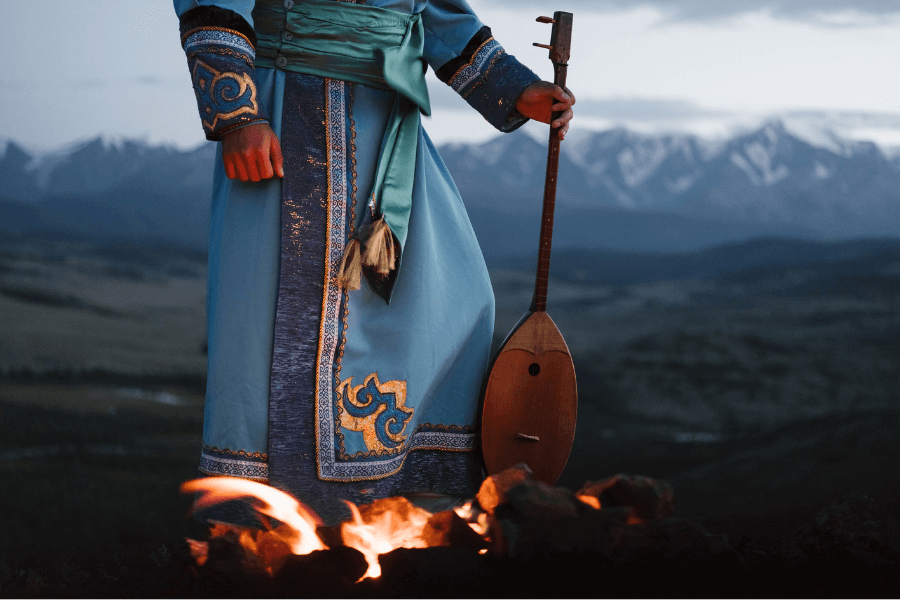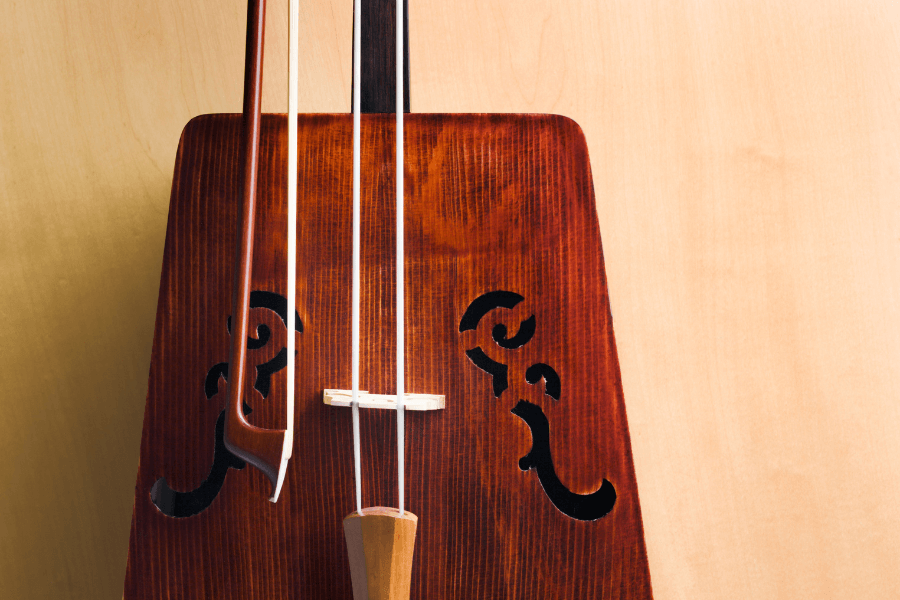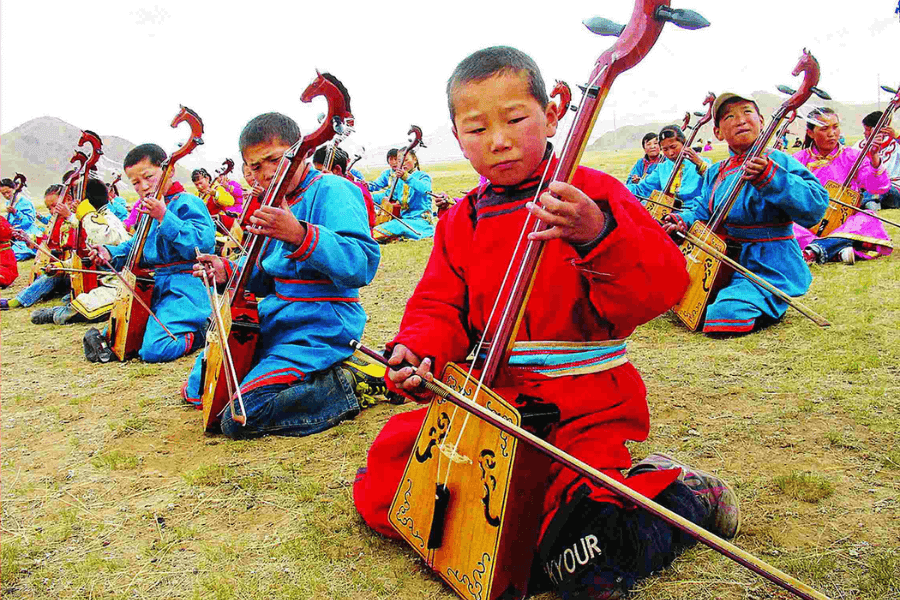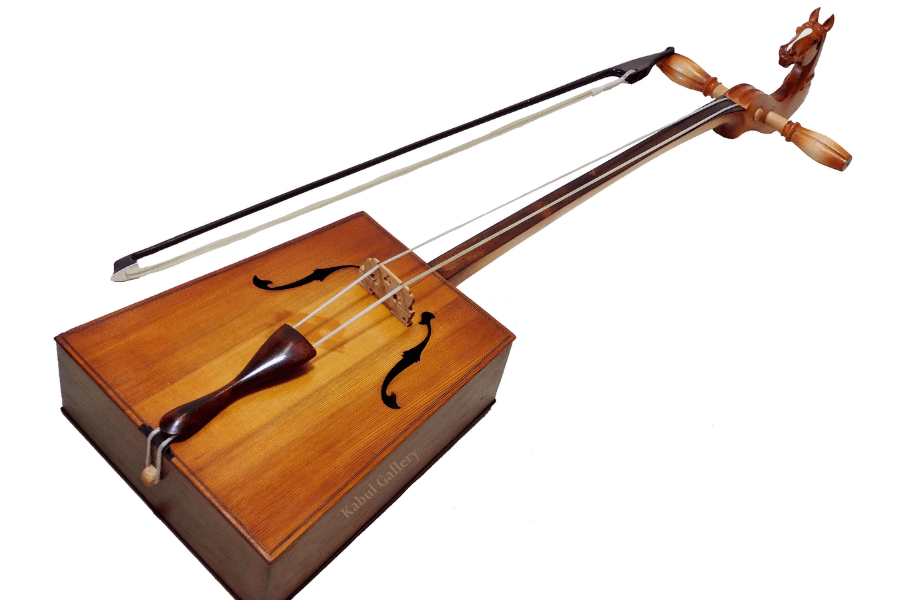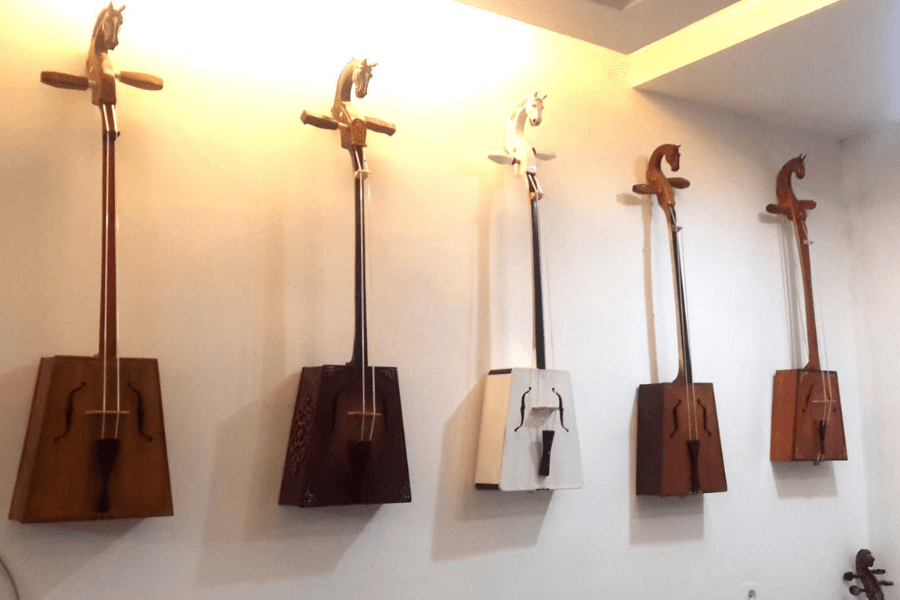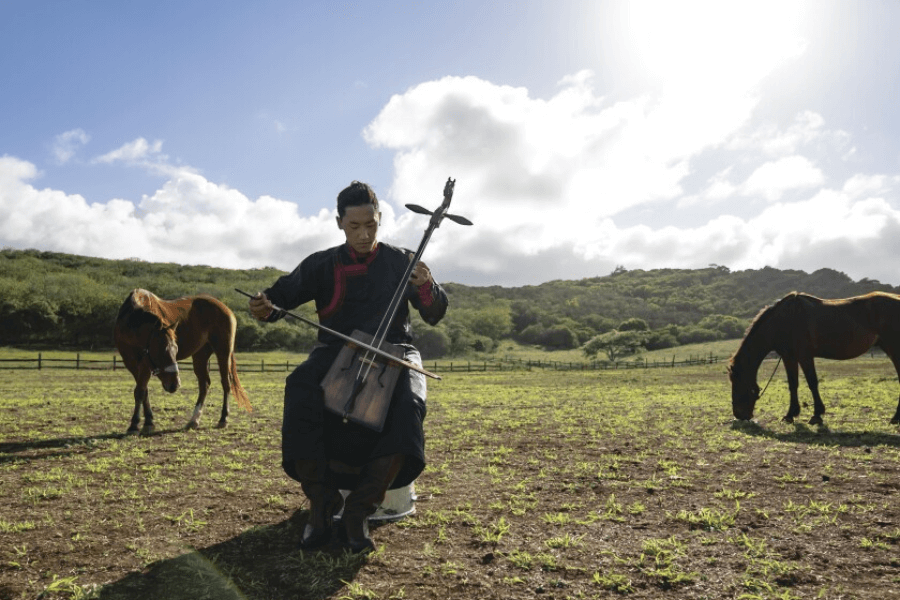Embark on a captivating journey into the heart of Mongolian culture with our comprehensive guide to the Morin Khuur, also known as the Mongolian Horsehead Fiddle Instrument. Learn about the construction and components of the Morin Khuur, and discover its timeless legends and symbolism. Whether you're a music enthusiast, a cultural explorer, or planning a Mongolia package tour, this guide offers invaluable insights into the Morin Khuur and its place in Mongolian heritage.
Introduction to the Morin Khuur - Horsehead Fiddle Instrument
The Morin Khuur, also known as the Mongolian Horsehead Fiddle, stands as a symbol of Mongolia's rich musical heritage and cultural identity. This traditional bowed string instrument holds a central place in Mongolian music, revered for its distinct sound and profound symbolism. With its unique design resembling the head of a horse, complete with strings representing the horse's mane, the Morin Khuur embodies the deep connection between the Mongolian people and their revered steeds.
Variations of the Morin Khuur include the Igil, Tovshuur, and Tsuur, each with its own unique characteristics and regional variations. As a cornerstone of Mongolian folk music, the Morin Khuur is celebrated for its versatility, capable of producing a wide range of tones and emotions, from haunting melodies to lively dance tunes. Throughout history, the Morin Khuur has played a vital role in Mongolian culture, serving as both a musical instrument and a symbol of national pride, and its legacy continues to resonate in contemporary Mongolian music and art.
History and Origins of the Horsehead Fiddle Instrument
The history and origins of the Morin Khuur, also known as the Mongolian Horsehead Fiddle, trace back centuries, intertwining with the rich cultural tapestry of Mongolia. Believed to have originated during the time of the Hunnu Empire around 200 BCE, the instrument has endured as a symbol of Mongolian identity and musical tradition. Its design, with a body resembling the head of a horse and strings representing the horse's mane, reflects the deep reverence and close relationship between the Mongolian people and their horses, essential companions in nomadic life.
Initially crafted by skilled artisans using natural materials such as horsehair, wood, and camel or sheep skin, the Morin Khuur served as more than just a musical instrument. It held spiritual significance, with its melodies believed to evoke harmony with nature and the ancestral spirits. Over time, the instrument evolved both in design and playing technique, influenced by cultural exchanges along the Silk Road and interactions with neighboring civilizations.
During the socialist era of the 20th century, the instrument experienced a revival as Mongolians sought to preserve their cultural heritage amidst political changes. Today, the Morin Khuur occupies a prominent place in Mongolian music, featuring prominently in traditional folk performances, celebrations, and rituals. Its haunting melodies and evocative tones continue to captivate audiences worldwide, serving as a testament to the enduring legacy
Who invented the Horsehead Fiddle Instrument
The precise origin of the Horsehead Fiddle Instrument, known as the Morin Khuur in Mongolia, remains shrouded in history and legend. While its invention is attributed to various nomadic tribes across Central Asia, including the Mongols, Kazakhs, and Tuvans, the exact individual or group responsible for its creation remains unknown. It is believed that the Morin Khuur evolved over centuries, with influences from neighboring cultures and musical traditions shaping its development. Regardless of its origins, the Horsehead Fiddle Instrument has become an integral part of Mongolian culture, revered for its distinctive sound and symbolic significance, embodying the nomadic spirit and musical heritage of the region.
Construction and Components of the Horsehead Fiddle Instrument
The construction and components of the Horsehead Fiddle Instrument, known as the Morin Khuur in Mongolian, are integral to its unique sound and cultural significance. Crafted with meticulous attention to detail, the Morin Khuur typically features a distinctive horse-shaped headstock, carved from wood or sometimes even camel or horse bone, symbolizing the revered connection between the Mongolian people and their horses. The neck of the instrument extends from this headstock, often adorned with intricate carvings and inlays, leading to the resonating body, which is traditionally crafted from a single piece of wood.
Strings, traditionally made from horsehair, are stretched along the length of the neck and attached to tuning pegs at the base, allowing for precise adjustments to achieve the desired pitch. The bow, or bow hair, used to play the Morin Khuur is also typically made from horsehair, contributing to the instrument's distinctive timbre and resonance. Additionally, the Morin Khuur may feature decorative elements such as ornate horsehair tassels or traditional Mongolian motifs, further enhancing its aesthetic appeal and cultural significance.
Beyond its physical construction, the Morin Khuur embodies centuries of tradition and craftsmanship, passed down through generations of Mongolian artisans and musicians. Its unique design and components serve not only as functional elements but also as symbolic representations of Mongolia's nomadic heritage and deep spiritual connection to the natural world. As such, the Morin Khuur holds a revered place in Mongolian culture, celebrated for its timeless beauty, evocative melodies, and enduring legacy as a treasured symbol of national identity.
Morin Khuur Legends: Tales of Musical Mystique
Legend of Cuckoo Namjil
The Morin Khuur is steeped in captivating legends that echo through the ages, capturing the imagination of the Mongolian people. Among the most revered tales is the Legend of Cuckoo Namjil, a story that speaks of a skilled musician named Namjil, whose melodies were said to be so enchanting that they could summon the cuckoo bird from afar. Legend has it that Namjil's soulful tunes, resonating from his Morin Khuur, had the power to evoke emotions of longing and nostalgia, echoing the spirit of the vast Mongolian landscape.
Legend of Argasun Khuurch
Another cherished legend is the Legend of Argasun Khuurch, which recounts the tale of a legendary musician named Argasun Khuurch. According to folklore, Argasun was bestowed with divine gifts of musical prowess, mastering the art of the Morin Khuur with unparalleled skill and finesse. It is said that his performances were so mesmerizing that they could transcend earthly realms, transporting listeners to realms of ethereal beauty and spiritual enlightenment.
These legends not only celebrate the musical mastery of the players but also embody the deep reverence and spiritual significance attributed to this iconic instrument in Mongolian culture. Through these timeless tales, the Morin Khuur emerges not merely as a musical instrument but as a vessel for storytelling, connecting generations and preserving the rich tapestry of Mongolian heritage for centuries to come.
How to Play Mongolian Horsehead Fiddle
Positioning and Technique
To play the Morin Khuur, one must first master the art of positioning and technique. The player typically holds the instrument in their lap, cradling the intricately carved horse's head on their left shoulder. With the right hand, the strings of the Morin Khuur are plucked, producing rich and resonant tones, while the left hand delicately maneuvers the bow across the strings to create melodies that evoke the spirit of the Mongolian landscape.
Tradition Meets Modernity
Traditionally, the strings of the Morin Khuur were crafted from the hair of a horse's tail, a practice that imbued the instrument with a unique timbre and resonance. However, in contemporary times, strings are more commonly made from metal or nylon, offering durability and consistency in sound quality. Despite this modern adaptation, the Morin Khuur retains its distinctive warmth and mellow tones, making it a beloved instrument in Mongolian music.
Versatility and Expression
The Morin Khuur boasts a remarkable versatility that allows players to express a wide range of emotions through their music. Whether performing traditional folk songs, lively dance tunes, or haunting melodies, the instrument's warm and resonant sound captivates audiences and transports listeners to the heart of Mongolian culture. Furthermore, the Morin Khuur plays a significant role in Mongolian throat singing, a unique vocal technique that produces multiple pitches simultaneously, further enhancing the instrument's expressive capabilities.
Legacy and Tradition
As an integral part of Mongolian heritage, the Morin Khuur serves as more than just a musical instrument—it is a symbol of cultural identity and pride. Passed down through generations, the art of playing this traditional Mongolia instrument embodies the rich tapestry of Mongolian tradition, connecting musicians with their ancestors and preserving the essence of their culture for future generations to cherish. Through dedication and reverence, players honor the legacy of the Morin Khuur, ensuring that its melodic strains continue to resonate across the vast Mongolian steppes for years to come.
Cultural Significance and Symbolism of the Morin Khuur
The Morin Khuur, also known as the Horsehead Fiddle Instrument, holds profound cultural significance and symbolism in Mongolian society. As a cherished emblem of Mongolian heritage, the Morin Khuur transcends its role as a mere musical instrument and embodies the essence of Mongolian identity.
At the heart of its cultural significance lies its connection to nomadic life on the vast Mongolian steppes. For centuries, the Morin Khuur has served as a companion to nomadic herders, providing solace and entertainment during long journeys across the rugged terrain. Its melodic strains echoed across the open plains, serving as a testament to the resilience and spirit of the Mongolian people.
Symbolically, the Morin Khuur represents the bond between humans and nature, mirroring the harmonious relationship that exists between nomadic herders and the land they call home. The intricately carved horse's head at the top of the instrument symbolizes the revered status of the horse in Mongolian culture, embodying qualities of strength, freedom, and endurance.
Moreover, the Morin Khuur serves as a vessel for storytelling and cultural expression, preserving the oral traditions and folklore of the Mongolian people. Through its haunting melodies and evocative rhythms, the Morin Khuur transports listeners to a realm of myth and legend, where the tales of ancient warriors, heroic deeds, and epic battles come to life.
With its distinctive design, haunting melodies, and profound symbolism, the Morin Khuur embodies the spirit of the Mongolian people and their deep connection to the land and their nomadic way of life. Through its melodies, the Horsehead Fiddle Instrument invites listeners on a journey through time and space, connecting them with the essence of Mongolia's past, present, and future.

